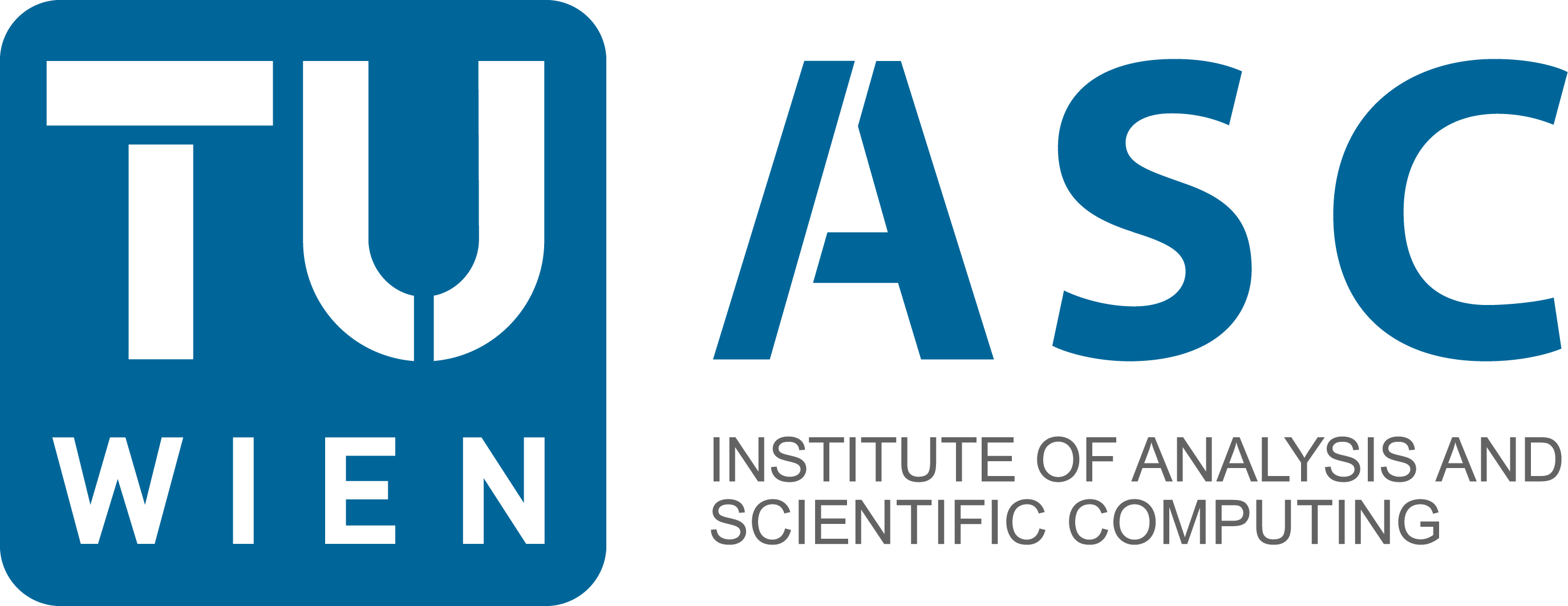12.3. Efficient Cholesky factorization#
The Cholesky factorization of a symmetric, positive definite matrix \(A\) is
where \(L\) is a lower triangular matrix. After computing the factorization, the solution of a linear system \(A x = b\) can be found by forward/backward substitution.
Very similar is the LDL factorization
where \(D\) is a diagonal matrix, and \(L\) is a lower, normalized (i.e. \(L_{ii}=1\)) matrix. The advantage is to avoid computing square roots, and it (may) also work for non positive definite matrices.
A simple algorithm for computing the LDL-factorization is
void CalcLDL (MatrixView<T,ORD> A)
{
size_t n = A.rows();
for (size_t i = 0; i < n-1; i++) {
T inv_dii = 1.0 / A(i,i);
for (size_t j = i+1; j < n; j++) {
T hji = A(j,i)
A(j,i) = hji*inv_dii:
for (size_t k = i+1; k <= j; k++)
A(j,k) -= hji * A(k,i)
}
}
If we want to optimize that algorithm, we have to redo the optimization of micro-kernels, and the cache optimization.
12.3.1. A recursive computation of the Cholesky factorization#
The Cholesky-factorization of a \(1 \times 1\) matrix is just taking the square-root of \(a_{11}\). For matrix sizes \(n \geq 2\) we split the matrix into \(2 \times 2\) block matrices:
with \(S = L_{22} L_{22}^T\). Here, \(*\) means defined by symmetry.
The block-Cholesky factorization can be computed by 4 steps:
Compute Cholesky factoriaztion for \(A_{11} = L_{11} L_{11}^T\)
Compute \(L_{21}\) by solving a triangular system \(L_{21} L_{11}^T = A_{21}\)
Compute \(S = A_{22} - L_{21} L_{21}^T\)
Compute Cholesky factorization of \(S = L_{22} L_{22}^T\).
Step 1 and step 4 are Cholesky factorizations of matrices of size \(n/2\). Step 3 is a matrix-matrix product, which we can compute with optimal performance.
Step 2 is solving a triangular system for many vectors \((x_1, \ldots x_n)\) stored in a matrix \(X\):
Again, we write \(L\) as a \(2 \times 2\) block matrix, and split \(X\) and \(Y\) vertically:
This is done in 3 steps:
Compute \(X_1\) by solving \(L_{11} X_1 = Y_1\)
Compute \(\widetilde Y_2 = Y_2 - L_{21} X_1\)
Compute \(X_2\) by solving \(L_{22} X_2 = \widetilde Y_2\).
Steps 1 and 3 are problems of the same type, but for half of the problem size. Note that the right hand side matrix \(Y\) can be overwritten by the solution \(X\), no additional memory needs to be allocated.
// compute X <-- Inv(L) * X
// L ... n \times n
// X ... n \times m
template <typename TL, Ordering OL, typename TX, Ordering OX>
void SolveTriangular (MatrixView<TL,OL> L, MatrixView<TX,OX> X) {
size_t n = L.rows();
if (n == 0) return;
if (n == 1) {
X *= 1/L(0,0);
return;
}
size_t n2 = n/2;
auto L11 = L.rows(0,n2).cols(0,n2);
auto L21 = L.rows(n2,n).cols(0,n2);
auto L22 = L.rows(n2,n).cols(n,n);
auto X1 = X.rows(0,n2);
auto X2 = X.rows(n2,n);
SolveTriangular (L11, X1);
X2 -= L21 * X1;
SolveTriangular (L22, X2);
}
The LDL is a little bit more tricky, since
